Elephant West project space by Liddicoat & Goldhill opens in disused petrol station
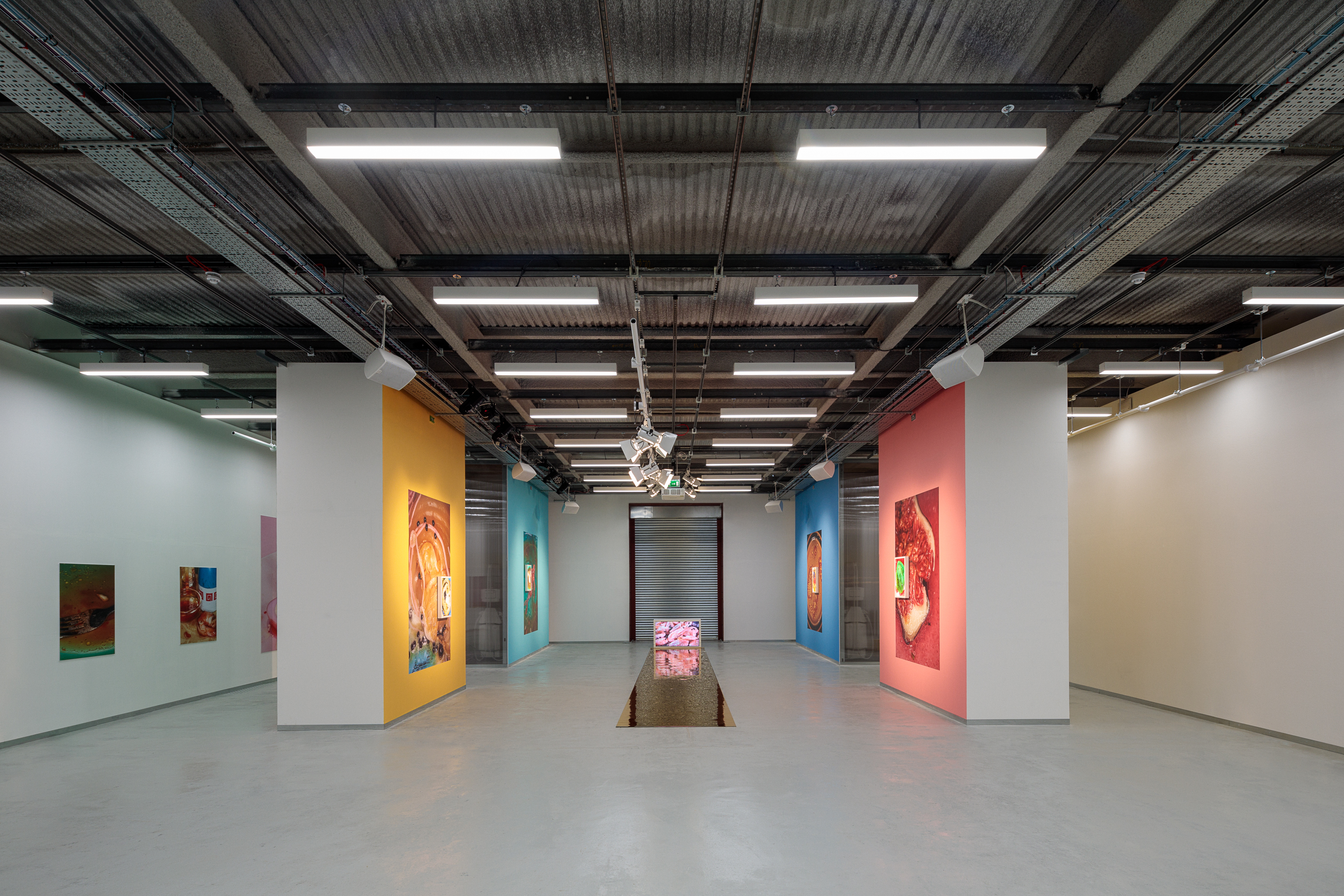
In west London a disused petrol station has been renovated into an industrial style project space by architecture studio Liddicoat & Goldhill. Named ‘Elephant West’, the gallery is a physical manifestation of the visual culture publication Elephant.
The space is a canvas for showcasing emerging artistic talent, ‘environmental takeovers’, immersive experiences and creative programming. High ceilings in the main project space reach the height of the original petrol station and the architecture’s industrial design serves to break down the stiffness of the traditional commercial white cube gallery – the exterior is clad with a pixelated Elefant galvanised steel scaffold planking with vast industrial roller shutter door openings.

The exterior facade and entrance to Elephant West.
Remnants of the site’s original purpose have been preserved and celebrated in different ways – the petrol pumps have been sprayed white and enclosed behind four giant polycarbonate columns, while manhole covers and concrete bollards highlighted with contrasting epoxy coatings.
‘Our design exposes the latent architectural potential of a derelict, utilitarian building. It also resurrects the foundation myth of White City, which gained its name from dozens of white-painted temporary pavilion-like structures built from the 1908 Franco-British Exhibition,’ say architects Liddicoat & Goldhill.
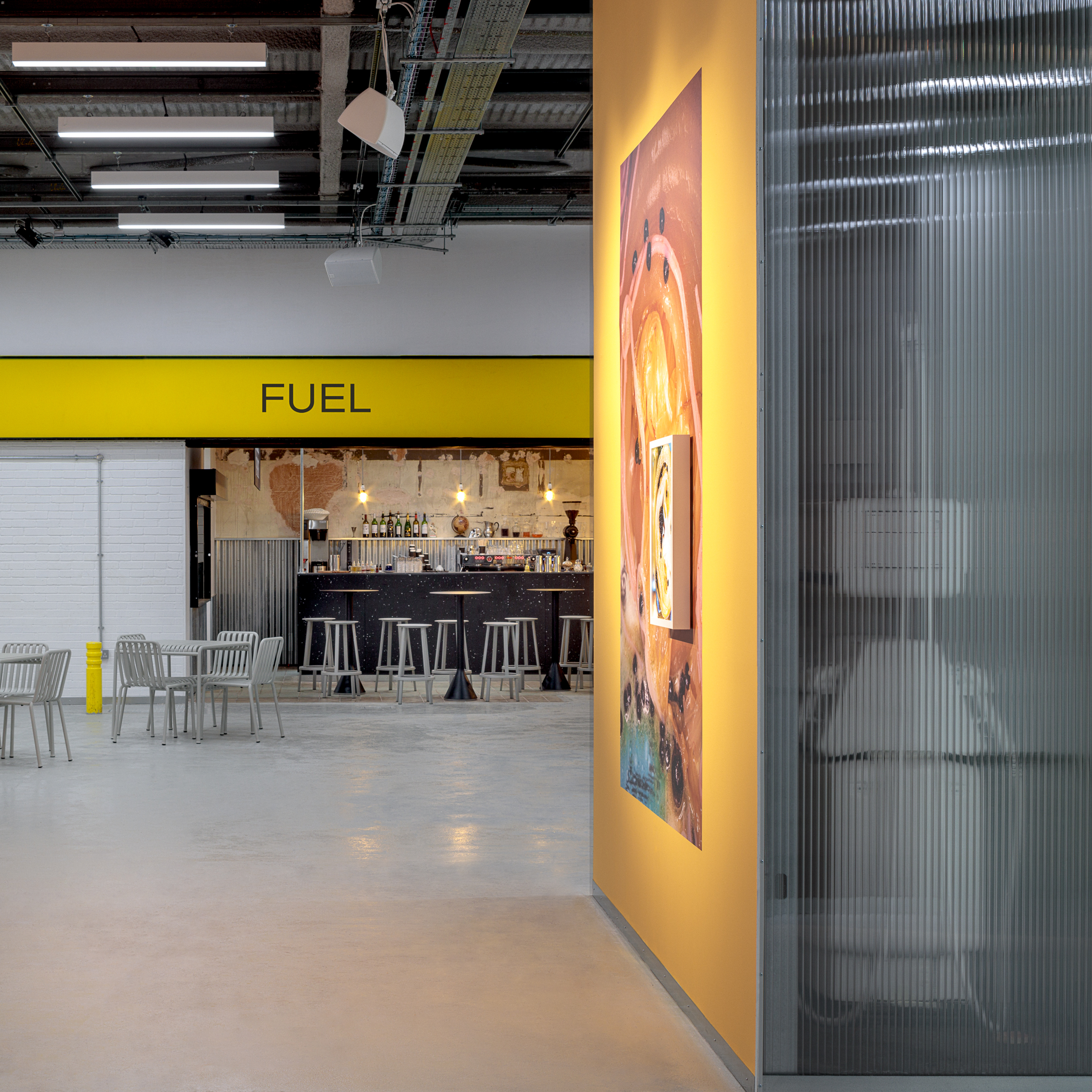
Fuel cafe at Elephant West gallery.
‘Elephant’s tagline is “Life Through Art” and, in keeping with that, the work produced at Elephant West will resonate thematically with the concerns of the wider world rather than the narrower interests of the ‘art world’. Elephant West will turn ordinary life into cutting-edge art,’ says Robert Shore, creative director of Elephant who has spearheaded the project with Becca Pelly-Fry, head curator.
The first exhibition, ‘Dipping Sauce’, is an example of Elephant’s interactive and energetic approach. Huge photographs by west London-based Maisie Cousins show hyper-saturated macro imagery of food, insects, plants and nostalgic objects related to the experience of eating as part of a series of works that celebrate the joy and ceremony of eating, alongside which runs a programme of talks and workshops.
West London is currently experiencing a cultural renaissance, with the former BBC Television Centre redevelopment as an iconic centre piece, the RCA recently opening a White City campus and now Elephant West has jumped upon this new creative wave around White City, with its project space, Fuel café and bar, workstation hub, and shop inside it that will draw people in for many different reasons.
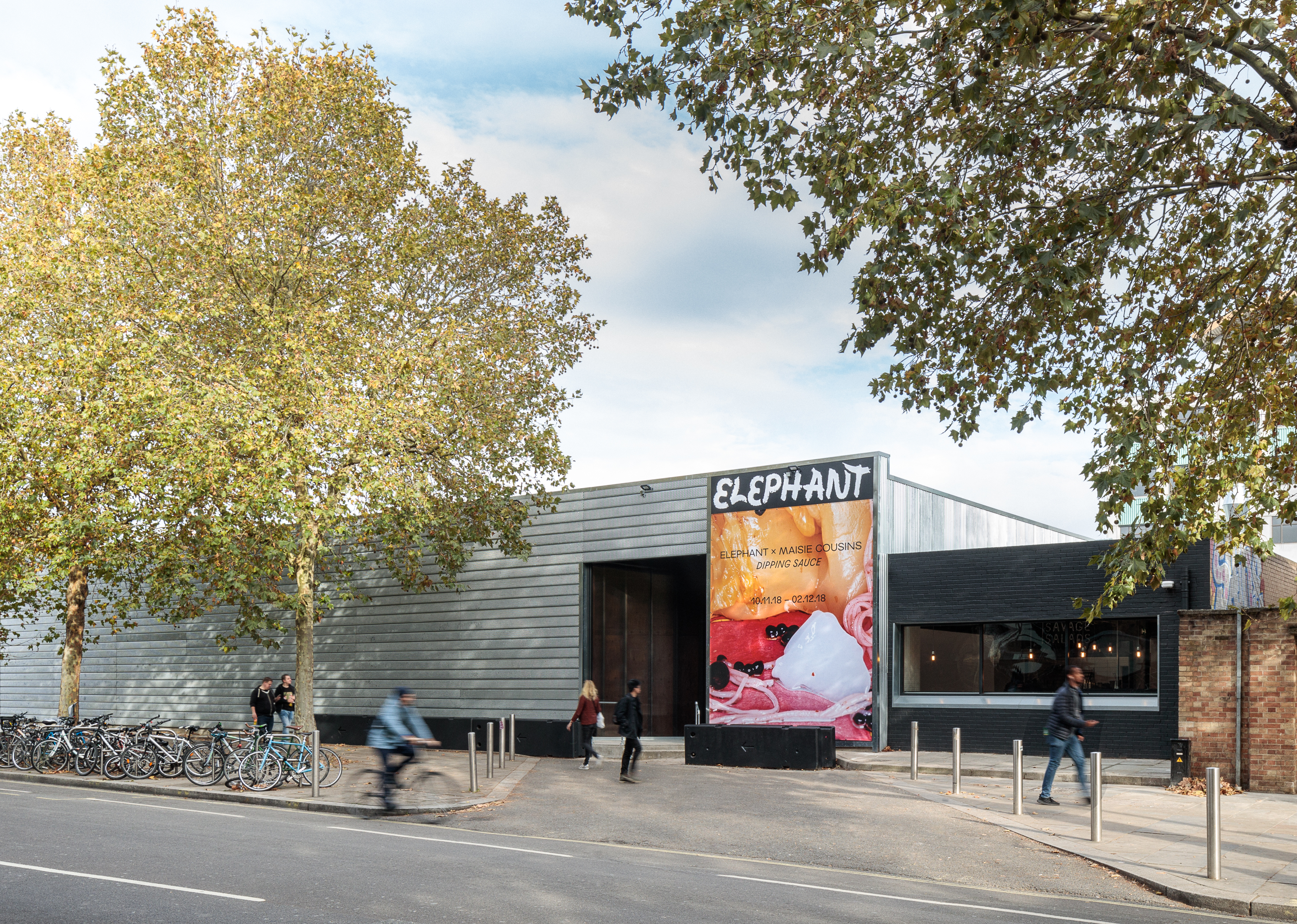
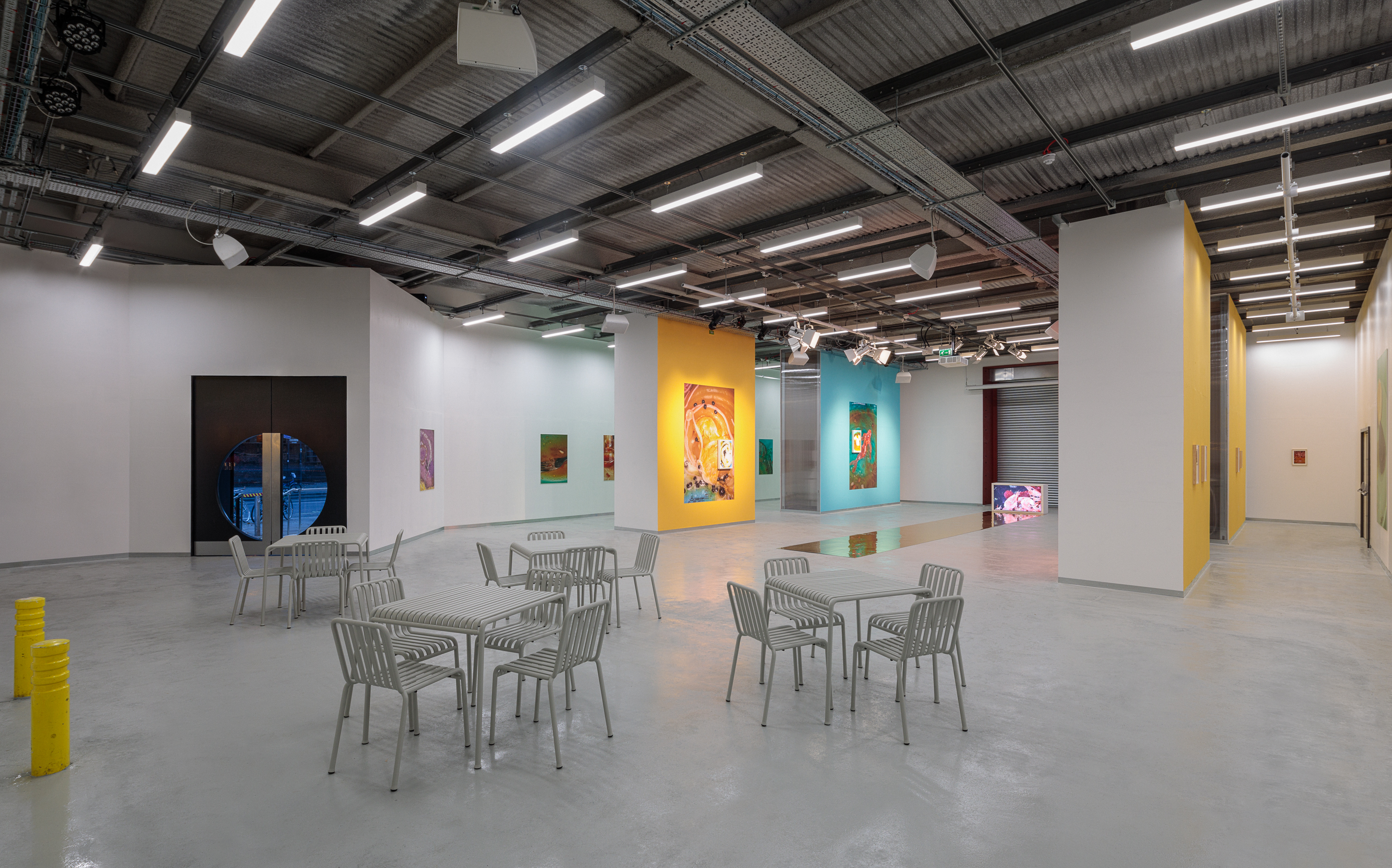

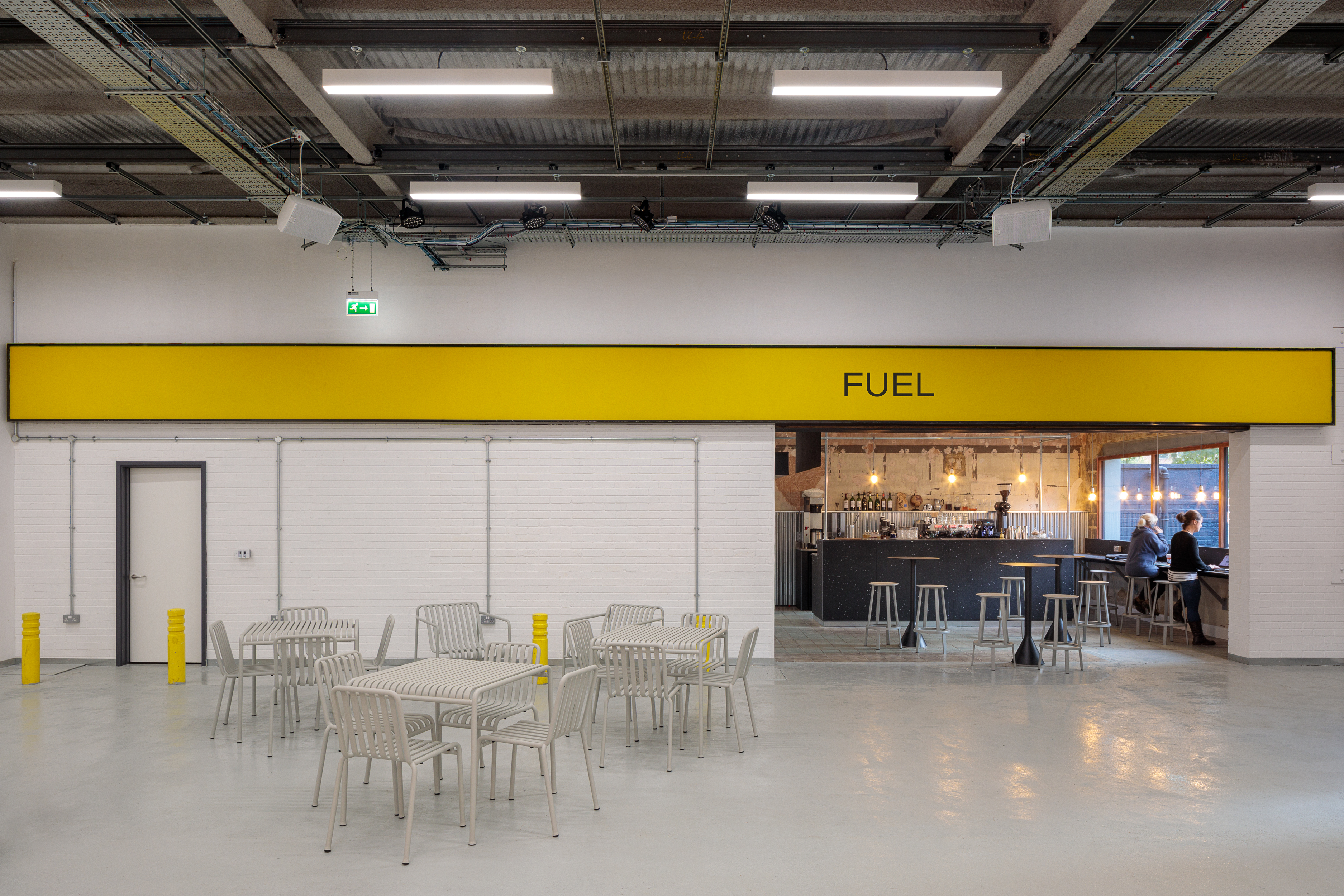
INFORMATION
For more information visit the Liddicoat & Goldhill website
Receive our daily digest of inspiration, escapism and design stories from around the world direct to your inbox.
Harriet Thorpe is a writer, journalist and editor covering architecture, design and culture, with particular interest in sustainability, 20th-century architecture and community. After studying History of Art at the School of Oriental and African Studies (SOAS) and Journalism at City University in London, she developed her interest in architecture working at Wallpaper* magazine and today contributes to Wallpaper*, The World of Interiors and Icon magazine, amongst other titles. She is author of The Sustainable City (2022, Hoxton Mini Press), a book about sustainable architecture in London, and the Modern Cambridge Map (2023, Blue Crow Media), a map of 20th-century architecture in Cambridge, the city where she grew up.
-
 Click to buy: how will we buy watches in 2026?
Click to buy: how will we buy watches in 2026?Time was when a watch was bought only in a shop - the trying on was all part of the 'white glove' sales experience. But can the watch industry really put off the digital world any longer?
-
 Don't miss these art exhibitions to see in January
Don't miss these art exhibitions to see in JanuaryStart the year with an inspiring dose of culture - here are the best things to see in January
-
 Unmissable fashion exhibitions to add to your calendar in 2026
Unmissable fashion exhibitions to add to your calendar in 2026From a trip back to the 1990s at Tate Britain to retrospectives on Schiaparelli, Madame Grès and Vivienne Westwood, 2026 looks set to continue the renaissance of the fashion exhibition
-
 Out of office: The Wallpaper* editors’ picks of the week
Out of office: The Wallpaper* editors’ picks of the week'Tis the season for eating and drinking, and the Wallpaper* team embraced it wholeheartedly this week. Elsewhere: the best spot in Milan for clothing repairs and outdoor swimming in December
-
 Out of office: The Wallpaper* editors’ picks of the week
Out of office: The Wallpaper* editors’ picks of the weekFar from slowing down for the festive season, the Wallpaper* team is in full swing, hopping from events to openings this week. Sometimes work can feel like play – and we also had time for some festive cocktails and cinematic releases
-
 The Barbican is undergoing a huge revamp. Here’s what we know
The Barbican is undergoing a huge revamp. Here’s what we knowThe Barbican Centre is set to close in June 2028 for a year as part of a huge restoration plan to future-proof the brutalist Grade II-listed site
-
 Out of office: The Wallpaper* editors’ picks of the week
Out of office: The Wallpaper* editors’ picks of the weekIt’s wet, windy and wintry and, this week, the Wallpaper* team craved moments of escape. We found it in memories of the Mediterranean, flavours of Mexico, and immersions in the worlds of music and art
-
 Each mundane object tells a story at Pace’s tribute to the everyday
Each mundane object tells a story at Pace’s tribute to the everydayIn a group exhibition, ‘Monument to the Unimportant’, artists give the seemingly insignificant – from discarded clothes to weeds in cracks – a longer look
-
 Out of office: The Wallpaper* editors’ picks of the week
Out of office: The Wallpaper* editors’ picks of the weekThis week, the Wallpaper* team had its finger on the pulse of architecture, interiors and fashion – while also scooping the latest on the Radiohead reunion and London’s buzziest pizza
-
 Out of office: The Wallpaper* editors’ picks of the week
Out of office: The Wallpaper* editors’ picks of the weekIt’s been a week of escapism: daydreams of Ghana sparked by lively local projects, glimpses of Tokyo on nostalgic film rolls, and a charming foray into the heart of Christmas as the festive season kicks off in earnest
-
 Wes Anderson at the Design Museum celebrates an obsessive attention to detail
Wes Anderson at the Design Museum celebrates an obsessive attention to detail‘Wes Anderson: The Archives’ pays tribute to the American film director’s career – expect props and puppets aplenty in this comprehensive London retrospective